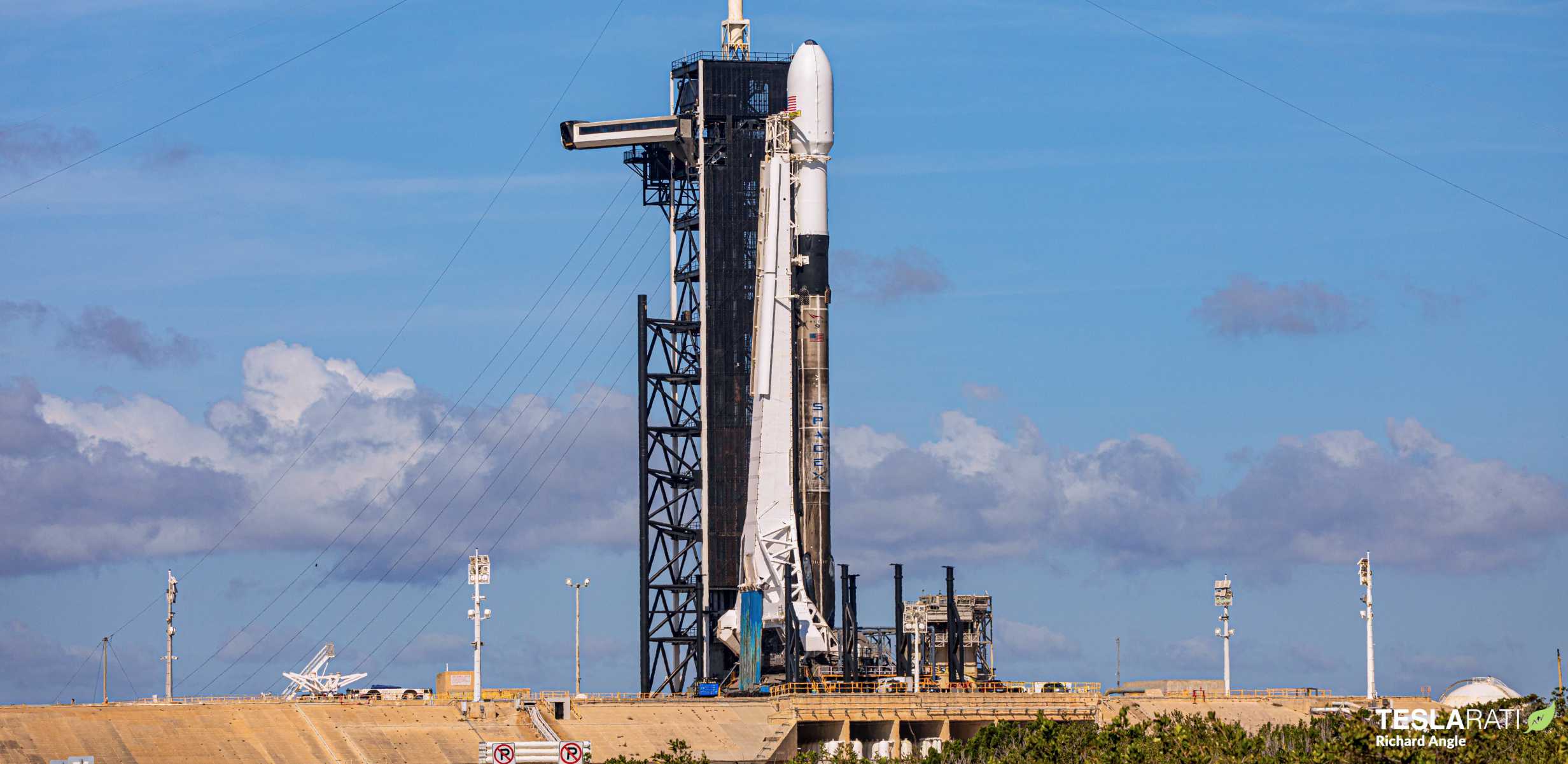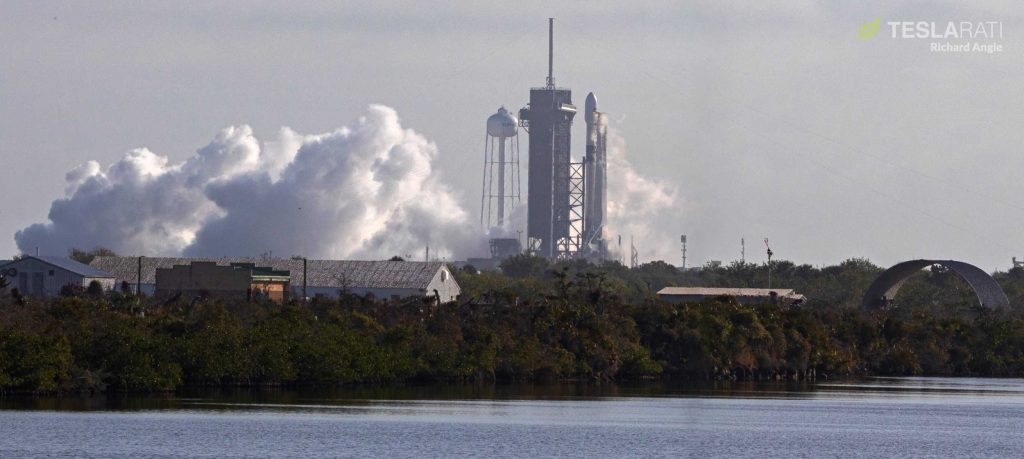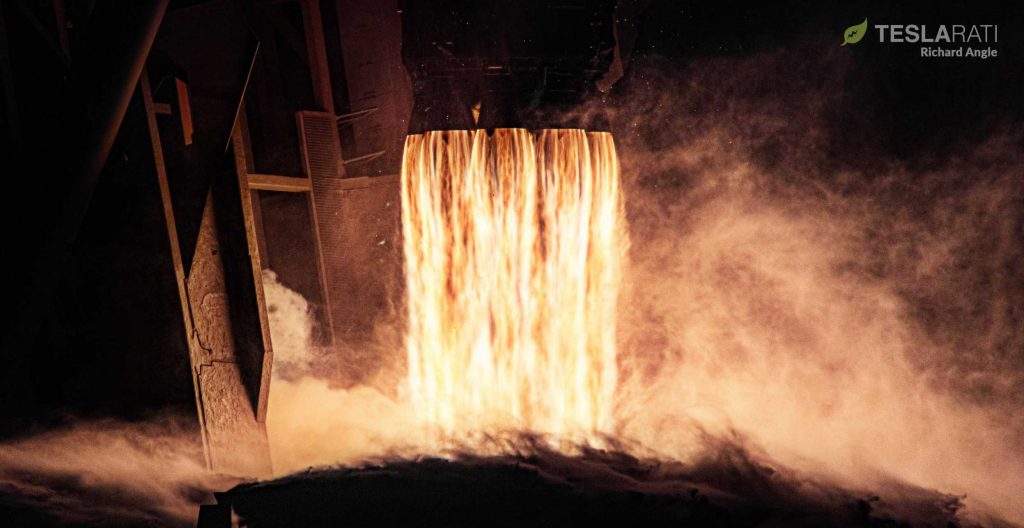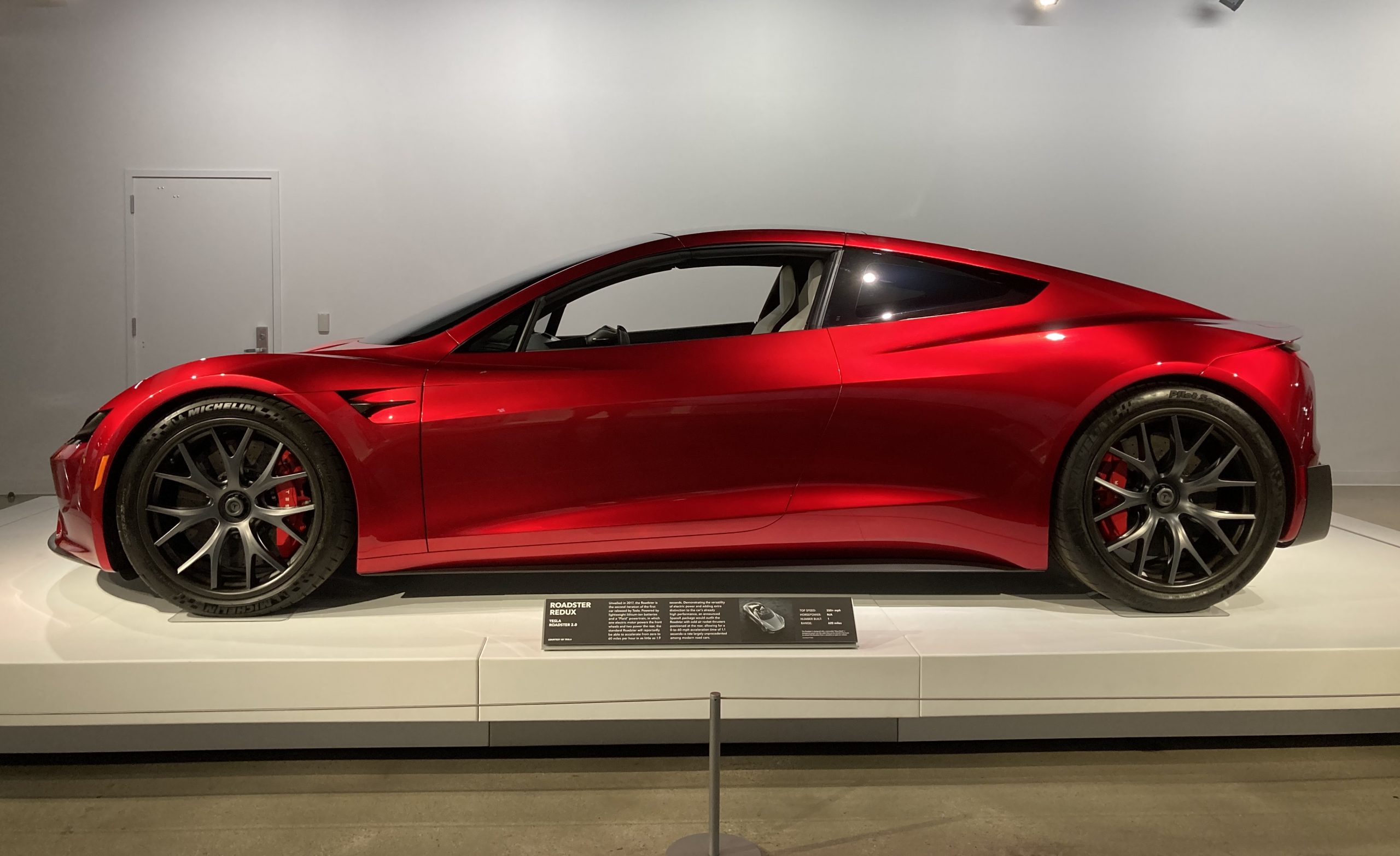

News
SpaceX rocket performs first last-second launch abort in years, delaying Starlink mission
A Falcon 9 rocket has performed SpaceX’s first last-second launch abort in years, shutting down the booster’s main engines and preventing liftoff just milliseconds after ignition.
Scheduled to lift off at 9:22 am EDT (13:22 UTC) on March 15th, SpaceX will now wait until no earlier than (NET) 8:21 am EDT (12:21 UTC) on Wednesday, March 18th for the sixth 60-satellite Starlink mission’s next launch attempt. Featuring an exceptionally flight-proven Falcon 9 booster and marking the second time ever SpaceX has reused a payload fairing, yesterday’s launch abort is also unique in its own right.
Notably, shortly after the launch countdown froze and Falcon 9 shut down at T-00:00:00, a launch operator – on-console either in Florida or at SpaceX’s Hawthorne, CA headquarters – revealed that the rocket had triggered a “launch abort on engine high power”. To explain that decision, a little background on how SpaceX launches its rockets and what exactly abort conditions are is necessary.
Software has always been a central part of SpaceX’s launch vehicles, treated more like a first-class citizen in design and engineering instead of the reluctant necessity other launch providers have frequently relegated it to. For anyone that’s watched numerous SpaceX launch webcasts, some might recognize the familiar “vehicle is in startup” callout that made around T-1 minute to liftoff. Standard on most modern launch vehicles, SpaceX’s Falcon rockets use onboard computers to take over their countdowns shortly before launch.
This is mainly done to allow the vehicle to simultaneously analyze thousands of channels of telemetry far faster and more reliably than humans ever could. During today’s launch attempt, that meant that Falcon 9 saw something it didn’t like just milliseconds before it was scheduled to command the release of the pad’s hold-down clamps and lift off.

Per one of SpaceX’s on-console engineers, the specific issue Falcon 9’s computer flagged was an “engine high power” alert. Soon after, SpaceX provided an update on Twitter, stating that the abort was “triggered due to out-of-family data during [an] engine power check” – putting the blame more on the sensors and software used to determine engine thrust than the engine hardware itself. An actual hardware or software failure that caused one or several booster engines to exceed their design limits could have potentially damaged B1048’s Merlin 1Ds, likely requiring weeks of repairs or a full swap with a different booster.
Given that Falcon 9 B1048 has already performed four orbital-class launches, hardware issues would not come as a major shock, but the successful static fire test it completed on Saturday made that far less likely. SpaceX’s confirmation that it was looking at an “out-of-family” reading thankfully means that only one of several thrust sensors showed the Falcon 9 booster producing too much thrust.

With any luck, post-ignition launch aborts will continue to be extremely rare for SpaceX’s Falcon launch vehicle family. The last such abort occurred in February 2016, more than four years and several booster ‘Block’ iterations ago.
Starlink L6 (V1 L5) is now scheduled to launch on Wednesday, March 18th, giving SpaceX workers some 72 hours to inspect Falcon 9 B1048’s engines, replace thrust sensors, tweak software, and prepare for a second launch attempt. Drone ship Of Course I Still Love You (OCISLY), fairing recovery ships GO Ms. Tree and GO Ms. Chief, and another support vessel or two remain on station in the Atlantic Ocean and will have to wait a bit longer for their next rocket recovery attempts.
Check out Teslarati’s Marketplace! We offer Tesla accessories, including for the Tesla Cybertruck and Tesla Model 3.

Elon Musk
Elon Musk just said some crazy stuff about the Tesla Roadster

Elon Musk appeared on the Moonshots podcast with Peter Diamandis today to discuss AGI, U.S. vs. China, Tesla, and some other interesting topics, but there was some discussion about the upcoming unveiling of the Roadster, the company’s electric supercar that will arrive several years after it was initially slated for release.
Musk made some pretty amazing claims about the Roadster; we already know it is supposed to be lightning-fast and could even hover, if Tesla gets everything to happen the way it wants to. However, the car has some pretty crazy capabilities, some of which have not even been revealed.
On the podcast, Musk said:
“This is not a…safety is not the main goal. If you buy a Ferrari, safety is not the number one goal. I say, if safety is your number one goal, do not buy the Roadster…We’ll aspire not to kill anyone in this car. It’ll be the best of the last of the human-driven cars. The best of the last.”
🚨 Elon on the Roadster unveiling, scheduled for April 1:
— TESLARATI (@Teslarati) January 6, 2026
Musk makes a good point: people who buy expensive sports cars with ridiculous top speeds and acceleration rates do not buy them to be safe. They hope they are safe in case of an emergency or crash, but safety is not at the forefront of their thoughts, because nobody buys a car thinking they’ll crash it.
The Roadster is truly going to push the limits and capabilities of passenger vehicles; there’s no doubt about that. Tesla plans to show off the new version car for the first time on April 1, and Musk has only hinted at what is possible with it.
Musk said back in November:
“Whether it’s good or bad, it will be unforgettable. My friend Peter Thiel once reflected that the future was supposed to have flying cars, but we don’t have flying cars. I think if Peter wants a flying car, he should be able to buy one…I think it has a shot at being the most memorable product unveiling ever. [It will be unveiled] hopefully before the end of the year. You know, we need to make sure that it works. This is some crazy technology in this car. Let’s just put it this way: if you took all the James Bond cars and combined them, it’s crazier than that.”
Production is set to begin between 12 and 18 months after the unveiling, which would put the car out sometime in 2027. Hopefully, Tesla is able to stay on track with the scheduling of the Roadster; many people have been waiting a long time for it.
News
Tesla launches hiring for Robotaxi program in its twentieth country
Overall, the hiring signals Tesla’s aggressive timeline for global dominance in autonomous mobility.

Tesla has launched a hiring initiative for its Robotaxi program in its twentieth country, as the company posted two new jobs in Thailand this week.
Tesla is hiring in Bangkok and Kowloon for the Vehicle Operator position, which is related to data collection, and is the first in Thailand, but the twentieth country overall, as the company tries to expand into other markets.
🚨 BREAKING: Tesla is hiring additional full-time Vehicle Operators in Bangkok, Thailand.
Previous openings were 6-month, part-time roles. These are equivalent to AI Safety Operator roles in the U.S. pic.twitter.com/R6LzoU1bos— Tesla Yoda (@teslayoda) January 5, 2026
Tesla has had active job postings for Vehicle Operator positions in the United States, India, Israel, Taiwan, Germany, the Czech Republic, Hungary, the UK, Finland, Switzerland, Sweden, the Netherlands, Austria, Spain, Norway, Italy, and Turkey in past listings.
These postings are not all currently available, likely because the roles have been filled.
Thailand is the most recent, and broadens the company’s potential path to expanding its ride-hailing program, which is only active in the United States in Austin, Texas, and the California Bay Area, so far.
These roles typically involve data collection, which assists in improving Autopilot and Full Self-Driving operation. Tesla’s self-driving programs utilize real-world data that is accumulated and stored, observing vehicle and traffic behavior, as well as tendencies that are performed by human drivers to help increase safety and overall performance.
Overall, the hiring signals Tesla’s aggressive timeline for global dominance in autonomous mobility. Although the company has several high-profile rivals and competitors in the field, it has established itself as a main player and a leader in the development of autonomous technology, especially in the U.S., as its FSD suite is refined on almost a weekly basis.
The Full Self-Driving suite is available in seven countries and territories currently, including the U.S., Canada, China, Mexico, Puerto Rico, Australia, and New Zealand. Its biggest goal for expansion is currently the European market, where regulatory hurdles have been the main bottleneck prolonging its launch on the continent.
Tesla has performed months of testing in various European countries, including France and Spain, and does have support in some areas from various regulatory agencies. However, the company is hoping to get through this red tape and offer its suite in Europe for the first time, hopefully this year.
News
Tesla China rolls out Model Y upgrades, launches low-interest financing
These strategies are aimed at improving the ownership experience and keeping vehicle pricing competitive in the world’s largest electric vehicle market.

Tesla has rolled out minor updates to the five-seat Model Y in China, upgrading the vehicle’s center display to a higher-resolution 16-inch 2K screen. The electric vehicle maker also introduced attractive financing options, including 7-year low-interest rates, to offset the new purchase tax on EVs.
These strategies are aimed at improving the ownership experience and keeping vehicle pricing competitive in the world’s largest electric vehicle market.
Five-seat Model Y gets larger, better display
With its recent update, all three variants of the five-seat Model Y now feature an upgraded 16-inch 2K resolution center display, which replaces the vehicle’s previous 15.4-inch 1080p panel. This screen was already used in the six-seat Model Y L, and it offered improved visual clarity. Tesla China has also updated the Model Y’s headliner to black, giving the vehicle a sleeker appearance.
Prices of the five-seat Model Y remain unchanged at RMB 263,500, RMB 288,500, and RMB 313,500 for the respective trims. This update enhances the cabin experience as domestic rivals are already adopting high-resolution screens. As noted in a CNEV Post report, some domestic automakers have begun rolling out vehicles equipped with 3K-resolution displays.
New financing offers
Tesla also launched ultra-long-term financing offers for its locally produced models in China, which include the Model 3 sedan, the five-seat Model Y, and the six-seat Model Y L, through January 31, 2026. The 7-year option features an annualized fee rate as low as 0.5%, which is equivalent to 0.98% interest. This is expected to save customers up to RMB 33,479 ($4,790) compared to standard rates.
A 5-year zero-interest plan is also available, and it has been extended to the Tesla Model Y L for the first time. These incentives help offset China’s new 5% purchase tax on New Energy Vehicles (NEVs) in 2026-2027. Some of Tesla’s rivals in China have announced in recent months that they would be covering the purchase tax owed by buyers early this year.








